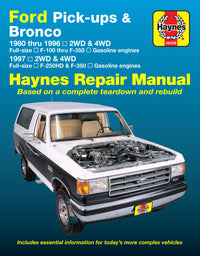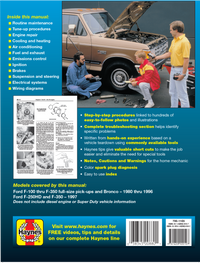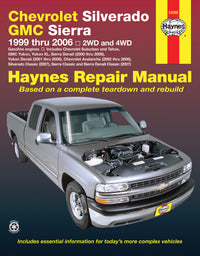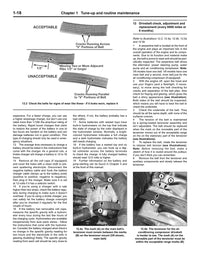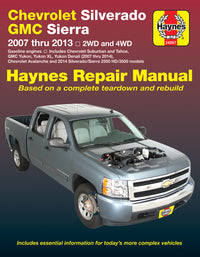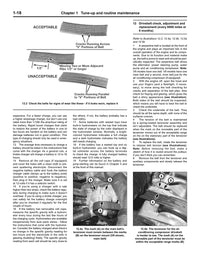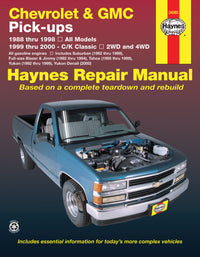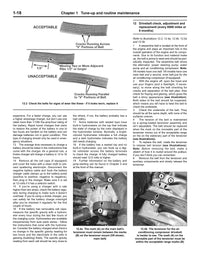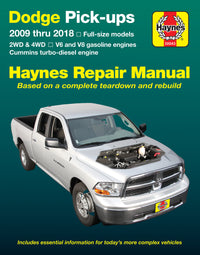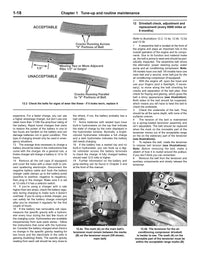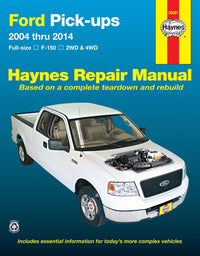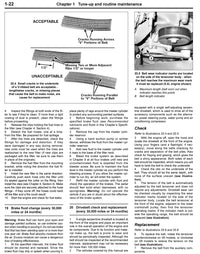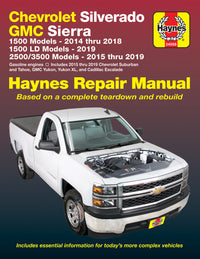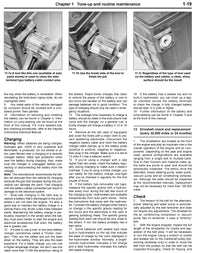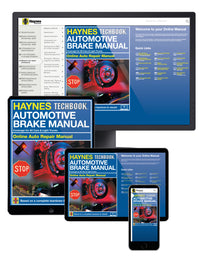Haynes has always been laser-focused on one aim – to help you maintain and repair your vehicle yourself, and to that end we’ve created this simple motorcycle maintenance guide to inspire you to dig deeper into what you can do with a manual for your specific vehicle.
The reality of life is that quite a large number of motorcycles and scooters in everyday use are ridden by owners who have little understanding of how their machine works. But it really needn’t be that way, because all powered two-wheelers share a number of similarities, and basic motorcycle care tips apply across the board, and as you learn how to keep a motorcycle running smoothly, you’ll find out that it isn’t very difficult at all. And you’ll save plenty of money fixing your motorcycle yourself with our wide range of manuals in both digital and print.

Brakes
Go over your motorcycle’s brake discs and other hardware while you’re checking the wheels. Check that there is plenty of pad left and that the rotors haven’t become warped or grooved.
Tires
We don’t need to remind you how vital your motorbike’s black circles are for your safety. Check your bike tire pressures before you ride, when the tires are cold. The correct PSI is listed on a factory sticker on the bike somewhere. Go over the sidewall on both sides and look for bulges caused by damage from potholes and curbs. Also check how much tread is left, and look for any foreign objects that you may have run over.
Wheels
Most motorcycle wheels are cast aluminium (with tubeless tires) so you no longer have to periodically test and true them by going over every spoke by hand. But if you do have spoked wheels, check for missing or loose spokes before or after every ride. Look for signs that the wheel bearings are failing or that the grease has leaked past the seals. Make sure there is no side to side play in the bearings and that the wheels roll freely. While spinning, look for flatspots or wobbles that would indicate the wheel is out of true; even cast alloy wheels can go out of true because of potholes or minor accidents.

Suspension
Look for signs of blown seals in the motorcycle fork and shock or shocks, which typically presents itself as an oily residue which collects dirt and dust. Do a couple of bounces while sitting on the bike to check that nothing is binding or bent. With the front wheel off the ground, test that the bike’s steering stem bearings are tight with no play in them and no resistance or notchiness in the steering. Check the drive belt or chain for proper tension, and damage or wear. We show you how to clean and lube a motorcycle chain here.
Chassis
Look over the bike frame for areas where the paint may have cracked or flaked, because that is a good indication that there may be a structural crack developing. Check the condition of the swingarm bushings by moving the rear wheel side to side, looking for play. Look for missing nuts and bolts, and occasionally check all of them for tightness.
Engine oil
Check the engine oil level and look for signs of leaks under the bike. On shaft-driven bikes, and bikes with separate primary drive and transmission oil, check all of these as well; since these tend to be neglected it is not hard to develop a leak and not know it until it is too late.
How to check your oil level
Here’s an example of how it’s done
1 Securely support the motorcycle in an upright position on a level surface.
2 Start the engine and warm it up for several minutes.
3 Shut off the engine and let the oil to settle for approximately three minutes.
4 Have an assistant sit on the bike to hold it vertically.
5 Check the engine oil level in the oil inspection window. The oil level must be between the full and low lines.
Caution:
Do not take this oil level reading with the motorcycle on the sidestand. The oil will flow away from the inspection window, giving a false reading.
6 If the oil level is low, unscrew the oil filler cap. Insert a small funnel into the filler neck. Add the recommended oil to correct the level.
7 If the oil level is too high, remove the oil filler cap and draw out the excess oil with a syringe or suitable pump.
8 Inspect the O-ring seal on the oil filler cap. Replace the O-ring if it is starting to deteriorate or harden.
9 Install the oil filler cap, and tighten it securely.
10 Recheck the oil level, and adjust if necessary.
Fluids
Check the motorcycle’s coolant level and top off with distilled water. Many bikes have a fuel gauge these days, but physically checking how much petrol is in the tank is a good idea if you haven’t ridden in weeks or longer. On bikes with petcocks, check that it is set to “on” and not “reserve” before you ride, and get petrol if you are on reserve.
How to check your coolant level
1 The coolant level should be checked when the engine is cold.
2 Securely support the motorcycle on a level surface.
3 Where applicable, remove the relevant fairing panel to reveal the expansion tank.
4 Check the coolant level in the coolant reservoir. It should be between the upper and lower level lines on the reservoir.
5 If necessary, remove the reservoir cap and add coolant into the reservoir (not the radiator) to bring the level to the upper mark.
6 Reinstall the reservoir tank cap.
7 Where applicable, reinstall the fairing panel.

Controls
Check the brake and clutch lever handles; be sure they pivot freely, are lubricated and that the pivot bolt and nut are there and tight. Also check the hydraulic system’s fluid level. Look over the entire length of the brake (and clutch) hoses and notice any cuts, swelling, or pinches that may be an indication of a failure in the near future. Don’t forget to check the rear brake pedal and fluid as well, or check for proper linkage adjustment if a mechanical drum.
Cables
Modern bikes use fewer cables these days, even for throttles. Be sure your cables are well lubricated with no kinks or pinches in the housing (don’t forget the speedometer and tachometer, if you have older mechanical versions), and move freely. Look for signs of fraying in the ends. Adjust for the proper amount of play.
Throttle
Even if your bike has throttle-by-wire instead of a cable-operated throttle, you still need to check it. Now is the time to discover that the throttle does not close quickly when you let go of it. Too much play in the throttle can mean just a loose cable, or it can mean a failing throttle position sensor (TPS). The cable is easily adjusted, but a new TPS will likely need to be ordered.

Lights
It is not exaggerating to say that your motorcycle’s brake/tail light has probably saved your life more times than you know, so make sure it is working before every ride. Check that your headlight bulb is functioning. Make sure all the blinkers work and that the reflectors are still intact for maximum visibility among traffic and at night.
Electrical
The time to find out your battery isn’t charging is not when you are halfway home; the simplest test to do is check that the headlight gets brighter as you rev the motor. If you have a wet cell battery, check the fluid level in it. Make sure both battery terminals are tight and free from corrosion, and check that the vent tube is in place and routed properly. Give the whole bike a quick once over for loose or pinched wires.
Kickstand
This is the last thing you check, often as you fold it up and ride off. Make sure the side and center stand (and “jiffy stand” if you own a Harley) fold back and stay in place securely with the spring. On bikes with a side stand interlock, test the function by trying to put the bike into gear with the stand down (it should stall).
This motorcycle checklist may seem long and complicated, but once you go over the bike a few times it will become second nature. An extra few minutes spent on making these checks before every ride could save you money by spotting loose fasteners before anything falls off for instance. And this pre-ride check just might save your life by catching a catastrophic failure before it happens.







